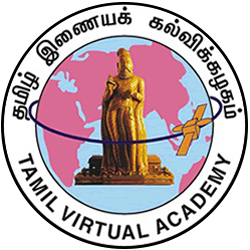Primary tabs
-
P10425 LESSON - 5
Vaanithasan's Thamilachi and Kodimullai
Women occupy prominence in the two works, Thamilachi and Kodimullai. The former reflects on caste system and the latter brings out the poet's love for nature. Under the rigid British rule this work sings about the communal and the linguistic divisions in society. Redeeming the Dravidian land from the Northern clutches and saving Tamil from the dominance of Hindi are the political, economic and social thoughts expressed by the poet. Chastity in life is required both for women and men. Atheism, opposition to puranas and Ithihasas, superstition, casteism, intercaste marriages, widow marriage, love marriage, adult education, reforming the slums are the rationalistic views dealt with in these works.
Thamilachi and Kodimullai appeared in the middle of the twentieth century deriving their titles from the names of the heroines. The pride of women is the central idea of Thamilachi and the land of Tamils against the historical background is the theme of Kodimullai. The author Vaanithasan was a primary school teacher committed to the Dravidian movement. Published in March 1949, Thamilachi consists of 18 parts and has about 173 poems and 4 Kummi Padalgal. Likewise, Kodimullai, published in 1950 has 16 parts and 132 poems. Both the works are aimed at social uplift and the Tamils' historical importance and artistic interest.
Marriages are arranged after taking into consideration the couple's interests. And Inter-caste marriages, widow remarriage, and the greatness of love are promoted. Caste and untouchability, discrimination are condemned in these works.
Vaanithasan's love for nature and his rich imagination are revealed in the manner in which he uses poetic devices to good effect.
Although both have women protagonists Thamilachi has a happy ending and Kodimullai has a trageatic ending. But both are revolutionary in effect.
Tamil is the backbone of the poet. How literature is the reflection of cultural change can be understood by learning this lesson.



